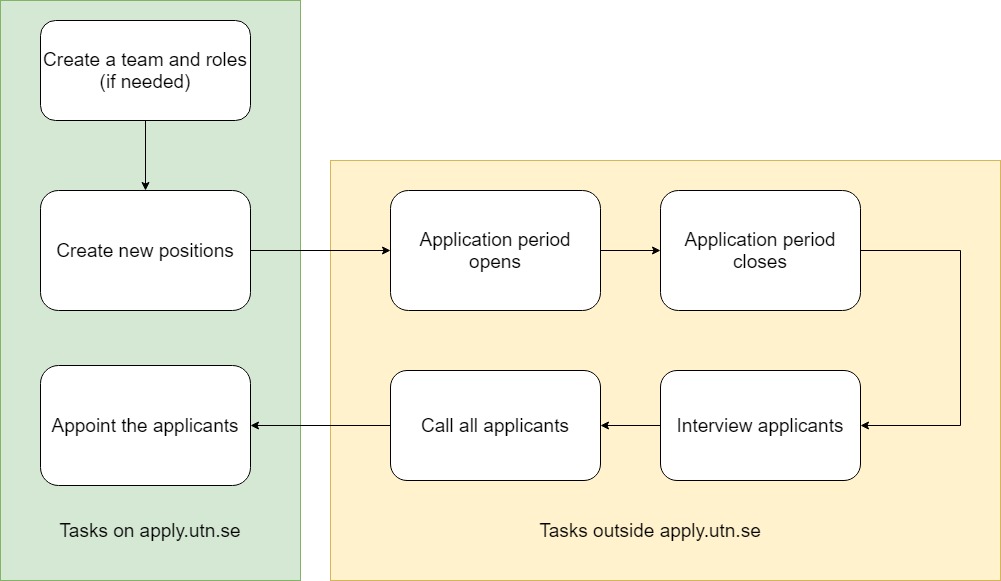Introduction
Introduction
UTN has created a website called apply.utn.se (commonly refered to as apply) where people can apply for various positions within the union. This documentation aims to explain how apply works and how you as a application administrator should use it.
This part will explain some important key concepts that you should know about when working with apply.
Getting access
The first step is getting access to the admin pages on apply. This access is given automatically to your account if you are appointed to a position with this type of access (i.e. a project manager, group leader etc.).
You will see a button with a bird in the bottom right of apply if you have this access. This is the button that takes you to the admin pages.
The button looks like this:

Flow of the application proccess
Most application processes within UTN follows the following flow:
- You prepare the application process on apply by creating new positions (and teams and roles if needed). These will be explained in a later chapter.
- When the application period opens you start advertising your application.
- When the application period closes you call people for interviews.
- After the interviews you decide which people you want to appoint and call all applicants and give them the results.
- Once you have called all applicants you appoint them on apply. This doesn’t have to be made immediately after the calls but must be done within the following days
These steps can be described with the following image:

Representation in apply
Apply is divided into 4 main parts. This is an overview of all the parts. Each part is explained more in their respective chapter.
Teams
A team is a committee or a work group e.g. Forskå, KV etc.
Each team consists of a number of roles.
Roles
A role represents an area of responsibilites that exists between years e.g. Web(b) in forskå or Kitchen Master in KV.
Each role has a number of positions associated to it.
Positions
A position is an instance of a role for a certain year e.g. Web(b) 18, Web(b) 19 etc.
Each position has a number of applications associated to it.
Note the difference between positions and roles. Roles are reoccuring each year while positions are specific for just one year.
Applications
Applications are created by users who want to apply for a position.
Example
Lets say that Linda applies to the position Web(b) 2021 in forskå. In apply this is represented in the following way.
Team - Forskå
Role - Web(b) (which is connected to the team forskå)
Position - Web(b) 2021 (which is connected to the role Web(b))
Application - Linda Lastname (which is connected to the position Web(b) 2021)
Appointing in apply
When you have decided which people to appoint and called all of the applicants, you must appoint them in apply.
This is explained in the chapter Appointing.
Next steps
Now that you have some knowledge about some key concepts you can start reading the next chapters about teams, roles, positions, applications and appointing!